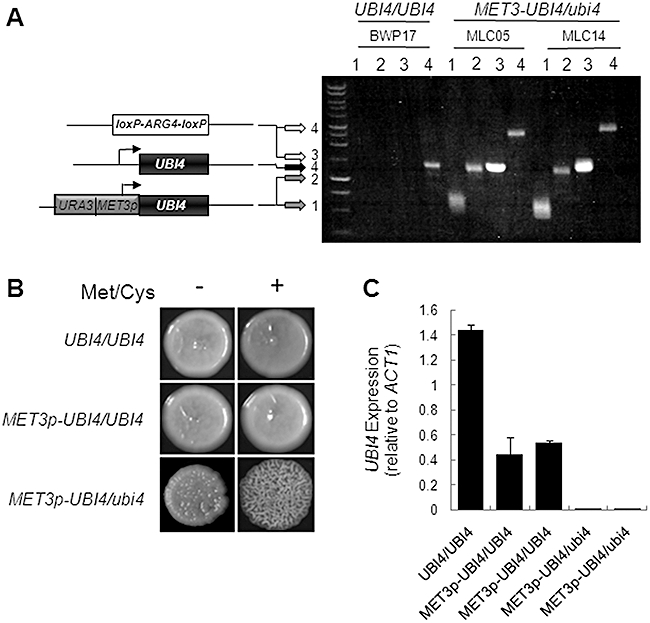Fig. 1.

Downregulation of polyubiquitin expression in conditional C. albicans MET3p-UBI4/ubi4 mutants does not prevent growth.A. Construction of the methionine-conditional C. albicans mutants MLC05 and MLC14 from the parental strain BWP17 (Table 1). One UBI4 allele was disrupted by insertional inactivation using the loxP-ARG4-loxP cassette, and the other allele was placed under the control of the MET3 promoter. Cartoons represent these alleles, and the arrows indicate the lengths of the corresponding diagnostic PCR products on the agarose gel: PCR reactions 1: primers MET3p-F and UBI4d-R (Supporting information– Primers); PCR reactions 2: primers MET3p-F and UBI4d2-R; PCR reactions 3: primers UBI4d-F and LALd-R; PCR reactions 4: primers UBI4d-F and UBI4d2-R.B. Growth of conditional C. albicans MET3p-UBI4/ubi4 mutants in the presence of methionine and cysteine on plates. YPD plates contained (+) or lacked (−) 2.5 mM methionine (Met) and cysteine (Cys): UBI4/UBI4 (BWP17); MET3p-UBI4/UBI4 (MLC03); MET3p-UBI4/ubi4 (MLC05) (Table 1).C. qRT-PCR quantification of UBI4 mRNA levels, measured relative to the internal ACT1 mRNA control, in cells grown with 2.5 mM Met/Cys for 4 h. Independent MET3p-UBI4/UBI4 (MLC03, MLC12) and MET3p-UBI4/ubi4 strains (MLC05, MLC14) were analysed.
